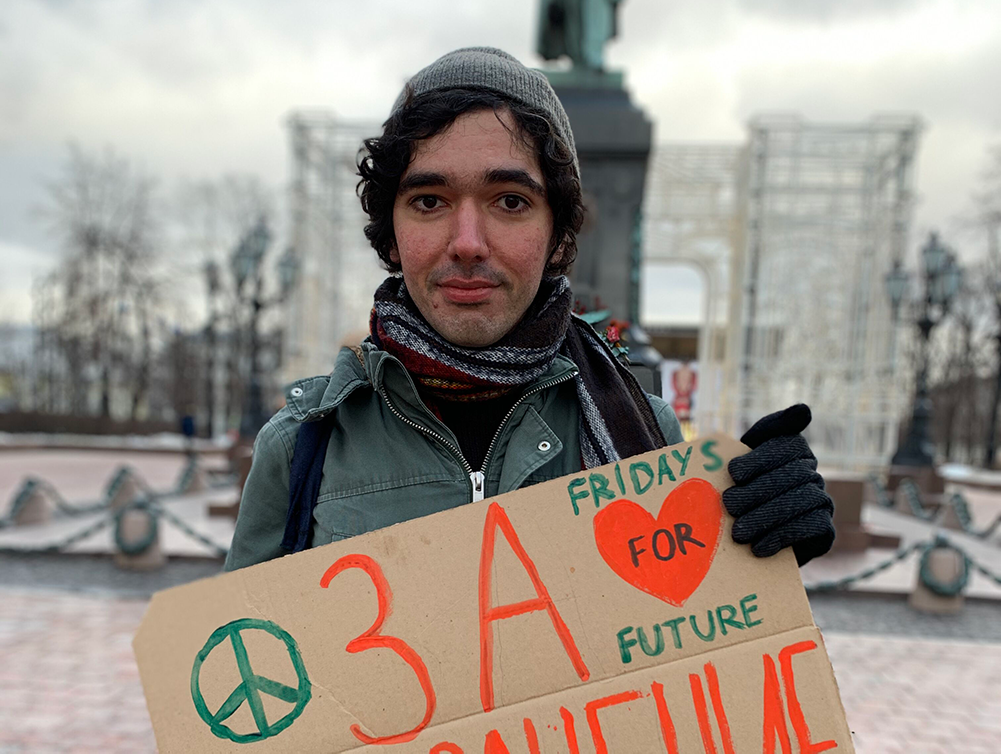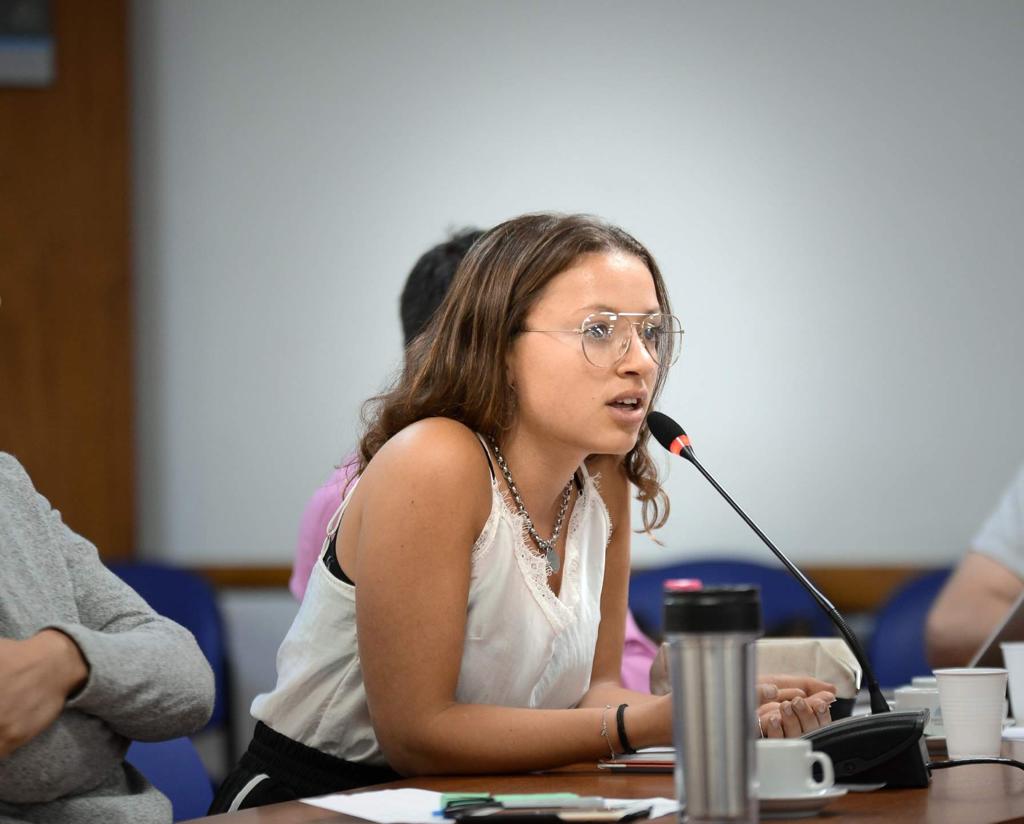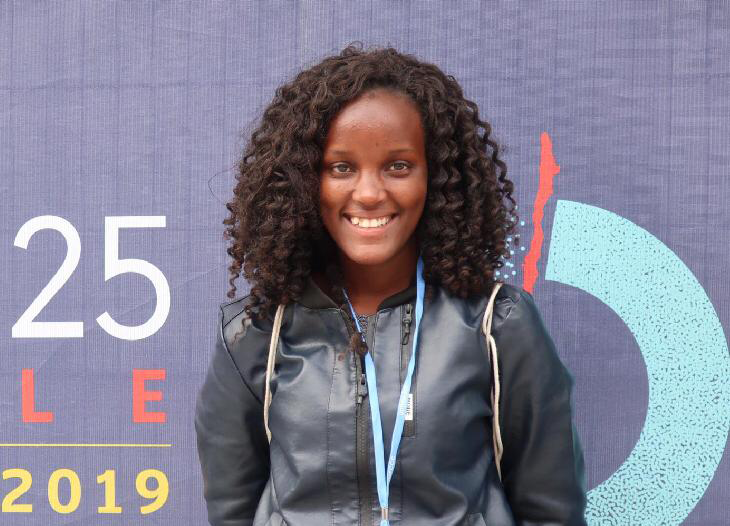The global youth climate movement has been quick to adapt to the COVID-19 crisis, calling for actions to limit the spread of the virus and moving climate strike activism online.
We’ve gathered the stories and plans of youth strikers, from places that don’t often get much international media coverage during global climate strikes.
Follow the links to their full first-person stories below, and contact Kim Bryan for more information and to schedule interviews. Additional images for media of each activist are available here (credit in file name).
Ridhima Pandey, 12 – Uttarakhand, India

Photo credit: Ridhima Pandey
Twitter | Instagram | Facebook
Ridhima is from Uttarakhand in Northern India, a state renowned for its natural beauty, and dominated by the Himalaya mountains. Cycles of drought and severe flooding and its effects on her community motivated her to learn about the climate crisis and commit to helping stop it. She filed a complaint against the Indian government for their inaction on climate, and joined 15 other children in the Children vs. Climate Crisis case in New York City last year, filing an official complaint to the UN Committee on the Rights of the Child.
“I had planned to join several of my friends from other regions in India to strike in April, but the country is on lock-down due to Covid-19, so our plans are cancelled. We are now striking from home under #ClimateStrikeOnline, and doing it together through video calls.
For me, this response tells us a lot about the climate crisis. The IPCC says we only have a decade left to respond to the climate crisis, so we have to learn from this crisis, and world leaders need to act strongly and proactively together in order to save lives, rather than only when a disaster becomes impossible to ignore.”
Read more
Arshak Makichyan, 25 – Moscow, Russia

Ismailova Zhanna
Twitter | Instagram | Facebook
A violinist from the Moscow Conservatory, Arshak pivoted to focus on building the climate movement in Russia as he saw a lack of action to tackle the climate catastrophe. Since March 15, 2019 he has been striking every Friday in Pushkin Square – and in December 2019, he was even jailed for 6 days for an authorized strike with 3 people. His applications for mass protests are typically refused in Russia, where activists often uses a single picket tactic.
“Now under coronavirus, we’re planning a digital strike, highlighting important issues each Friday, posting art, and photos of us striking at home under #ClimateStrikeOnline, and using TikTok. We spend a lot of time on calls – chatting, learning, and keeping motivation high. The movement consists of many independent and smart activists who will continue to act no matter what. But I hope it will be safe to be back on the streets soon.”
Read More
Nicole Becker, 19 – Buenos Aires, Argentina

Photo credit: Nicole Becker
Twitter | Instagram
With other youth strikers, Nicole co-founded Jovenes Por El Clima, a movement that looks at the climate crisis from a Latin American and human rights perspective. In 2019, they succeeded in pushing the country to declare a Climate and Ecological Emergency and to sanction the first Climate Change Law.
She speaks of the difference of the climate struggle in Latin America as compared to Europe or other developed countries, and the dangers many face as environmental defenders in Latin America. “We are a region where the exploitation of our land comes mostly from transnational companies, who take the money back to their countries and leave the environmental and social damage here. I think we now have the opportunity to design another form of industrialization because we see that this model did not work.”
“We’re organising a virtual mobilisation on the 22nd of April, Earth Day. We’re hosting a series of live streams on Instagram, and lots of different socio-environmental movements and organizations will be participating, including some bands and musicians. We chose this day so Argentinian society at large would know that this is a day to protest for the Earth. Our mobilisation was meant to be a huge street protest, but we have managed to adapt our plans and we hope it won’t lose its impact.”
Read More
Vanessa Nakate, 23 – Kampala, Uganda

Photo credit: Vanessa Nakate
Twitter | Instagram | Facebook | YouTube
Vanessa started her own solo strike outside the Ugandan parliament in January 2019. She’s been striking ever since, and is now an organiser for Fridays For Future Uganda, Save the Congo Rainforest Strikes, and the Africa-based Rise Up Movement. Throughout lockdown, with other activists she’s been participating in international meetings to connect the youth movement, and publishing daily videos, a podcast, and a YouTube channel.
Numbers at strikes in Kampala are often small, since permits can be hard to secure and it’s tough for children to leave school, but they are powerful. Many of the people participating are already feeling the impacts of climate crisis directly: droughts, flooding, landslides, and locusts.
“Although our digital channels may give us a platform in these times, many people in my country don’t have reliable access to a phone or the internet like I do. These are also often people that are already most affected by the climate crisis. So, it is up to those of us who have platforms during this time of lockdown, to use our voices to speak for them.”
Read more
Eyal Weintraub, 19 – Buenos Aires, Argentina

Photo: Tobias Skarlovnik
“I’m a Co-founder of Youth for climate Argentina. Climate change doesn’t affect me and my individual standard of living in any significant way, but there is a very specific reason for that. I am a white, middle class male. I am extremely privileged.
That’s one of the most devastating aspects of climate change. It affects in much greater numbers those who are already socially vulnerable. It hurts most those who have contributed to global warming the least. That’s something extremely important to consider when we talk about climate justice. Climate justice is not only mitigating the amount of CO2 levels we produce to prevent future damage, but also providing adaptive measures for those places where it is already being felt and reparation for those affected.
In a country like ours where you have 40% of the population living below the poverty line it is not enough to speak in abstract about the climate crisis. It’s necessary to find ways to directly relate it with the hardships and struggles that we suffer daily.
If there is one thing the Coronavirus pandemic has proven, it’s that governments have the ability to initiate drastic measures to avert catastrophes when necessary. The climate crisis is just as serious as this new global pandemic and yet we are not doing what is required to lower greenhouse emissions by 50% for 2030. Hopefully we will see countries not only promise to lower emission but also effectively act on their commitments and pass from empty speeches to concrete actions.”